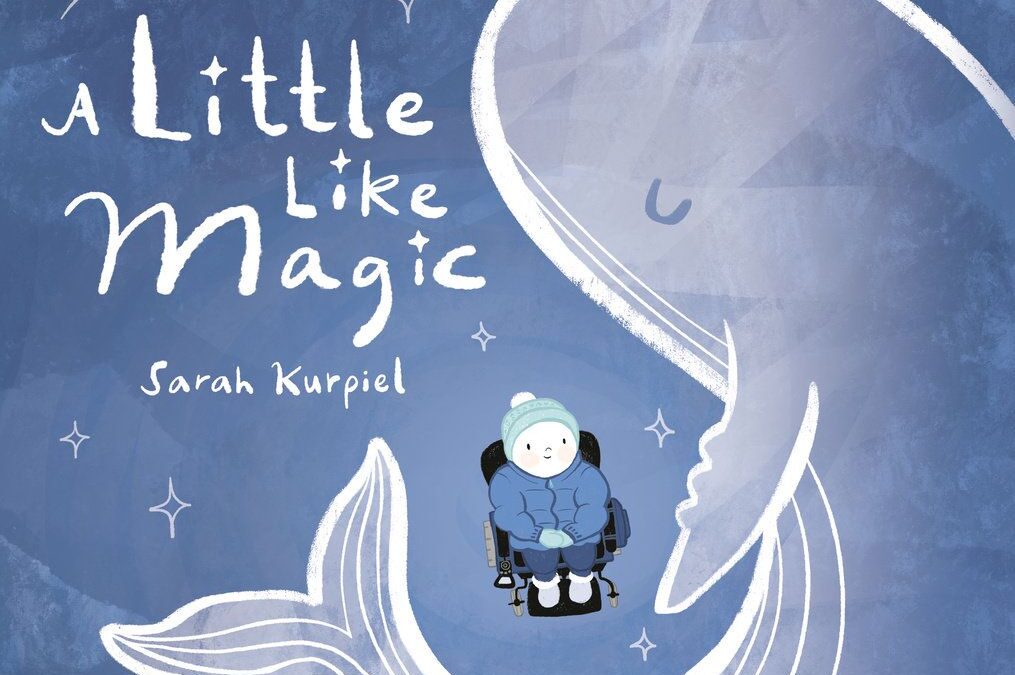A Little Like Magic by Sarah Kurpiel; Rocky Pond Books/Penguin Random, 2024.
A young child in a wheelchair is unsure about visiting unfamiliar places. Add to that, she’s cold and her hat is itchy. Despite misgivings, her confidence grows along with her amazement at the ice sculptures that take form. She comes to realize that though the ice art will soon be gone, her memories of a special experience will remain.
“Out on the edge you can see all kinds of things you can’t see from the center.”
~ Kurt Vonnegut, Player Piano
Why this book? Why will it matter to kids?
Thembi Duncan, director of a play I recently attended, reflected that “Inclusion…is about creating those inroads, those portals, that invite people into spaces where they might not feel they belong.” A Little Like Magic offers disability representation though the story is not about disability; in fact, it’s never mentioned. This ideal read aloud choice allows young children to see, be seen, and feel seen. The story’s text validates feelings of uncertainty and offers a satisfying resolution. A little magic surely can be found between the covers of this charming picture book.
Why read aloud?
We gather to share a book. We settle into a safe space as we interact with the book. We talk and reflect, exchanging thoughts, exploring concepts, building background knowledge—and community. When read-aloud sessions are routine, children become comfortable voicing their perspectives. They grow in active listening skills and learn to respect the thoughts, feelings, experiences, and beliefs of others. When we (educators, parents, and caregivers) select age-appropriate, length-appropriate stories based on needs and abilities, we offer children the opportunity to see themselves, see others, find validation, and contemplate solutions to conflicts and challenges that they may not have considered.
Read-aloud sessions are inclusive: there is no reading skills or level barrier, and learning obstacles are mitigated by preparation prior to reading the book aloud. In a read-aloud session there is immersion as well as the comfort of distance from the challenges the characters encounter.
Reading aloud engages listeners, offering a positive, secure, stress-free “learning without struggle” experience grounded in a book, the value of which cannot be overestimated.
“You think your pain and your heartbreak are unprecedented in the history of the world, but then you read. It was books that taught me that the things that tormented me most were the very things that connected me with all the people who were alive, or who had ever been alive.” ~ James Baldwin
Levels and Layers of Learning
Grade level: Pre-K—2
Social-Emotional Learning Themes
Acceptance, connection, creativity, curiosity, empowerment, encouragement, fortitude, gratitude, inspiration, kindness, perseverance, persistance, perspective, relationship skills, resilience, resourcefulness, respect, self-assurance, self-awareness, self-management, self-reliance, social awareness, tenacity, understanding
Content Area Connections: Social-Emotional Learning, Art
Using This Book in the Classroom
Hit the Ground Running Ready Resources for Educators, Homeschoolers, and Parents
Sarah’s last name is pronounced KURP yul.
Visit Sarah’s website.
Activity Sheets for A Little Like Magic.
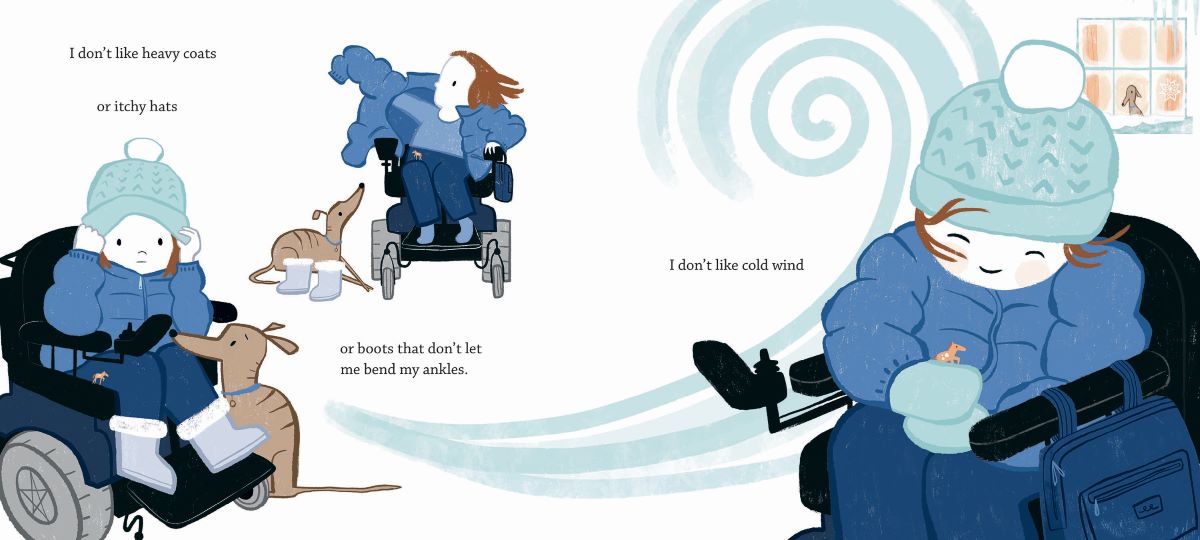
Illustration © Sarah Kurpiel
Write Away! Ideas to prompt writing
“[There is} a deep connection between how students read, write, and communicate, and how they develop socially and emotionally.” ~ Justina Schlund, Director of Field Learning for CASEL
Tell about something you once were unsure of doing or that you didn’t like doing. Explain how and why your feelings changed.
The main character in A Little Like Magic keeps a small plastic horse in her pocket to soothe herself. Do you have something special like that? Describe it.
In the story, the character loses her plastic horse. Write about a time when you lost something special.
The main character in A Little Like Magic does not like going to places she has never been before, but she ends up enjoying “the light and ice and stars” of the ice sculptures. What is something you are uncertain about? Most likely you have thought about the worst that could happen. Now think about this: what is the best that could happen? Write about it.
This prompt is inspired by one of Sarah’s answers to my interview questions:
What is one special experience that you hope to always remember? To help keep the memory, write about it just for yourself. Draw a picutre, too, if you like.
What is your favorite part in the book? Why?
What are your favorite winter activities? Why?
Poetry Break Related poetry to recite before or following the reading of this book
Poetry breaks fit perfectly into the framework of the school day. These brief moments can signal change, smooth or frame transitions—from beginning or ending the day to lining up for lunch; from zipping up backpacks and jackets to shifting from one subject to the next. Poetry breaks can reset mood or tone, providing a moment to pause, reflect, and breathe. Reading a poem aloud typically takes less than a minute, yet it can introduce or reinforce a concept, provide clarity, celebrate language, exemplify rhythm, enhance vocabulary, expand understanding, increase attention span, initiate reflection, spark imagination, or simply summon a giggle. And, poetry soothes and strengthens the spirit.
“Poetry builds resilience in kids and adults; it fosters Social and Emotional Learning. A well-crafted phrase or two in a poem can help us see an experience in an entirely new way.” ~ Elena Aguilar
Poetry to share throughout the winter season:
- A Child’s Calendar, poems by John Updike, illustrated by Trina Schart Hyman; Caldecott Honor; see “January” and “February”
- Stopping by Woods on a Snowy Evening by Robert Frost, illustrated by Susan Jeffers
- The Seasons: Poetry for Young People edited by John N. Serio, illustrated by Robert Crockett; see “Poems of Winter” section
- Winter Bees & Other Poems of the Cold by Joyce Sidman, illustrated by Rick Allen
- Winter Poems selected by Barbara Rogasky, illustrated by Trina Schart Hyman
- Winter Song by William Shakespeare, illustrated by Melanie Hall
And Then There’s This…
Enrichment activities, related books, online resources, craft projects, and ideas for further study
Ice Sculpting Resources can be found on Sarah’s website.
Book Collection Suggestions
Books that center on characters who are fearful, uncertain, or find comfort in quiet:
- A Cup of Quiet by Nikki Grimes, illustrated by Cathy Ann Johnson
- I Can Do It Even If I’m Scared by Lisa Katzenberger, illustrated by Hannah George (see Children’s Book Corner post)
- It Will Be OK: A story of empathy, kindness and friendship by Lisa Katzenberger, illustrated by Jaclyn Sinquett
- Quiet Karima by Nidhi Chanani
Find an additional listing of books that explore facing fears on this Children’s Book Corner blog post.
Find books featuring characters with disabilities on these previous Children’s Book Corner blog posts:
Have a title to suggest? Scroll down to add it in the Comments section at the end of this post.
Want to receive Children’s Book Corner each month? Sign up here. We never sell or share subscriber information.
Meet the Author-Illustrator

Sarah Kurpiel
Sarah Kurpiel is a self-taught picture book author and illustrator. Her debut book, Lone Wolf, received a starred review from the School Library Journal, while her books Original Cat, Copy Cat and Snake’s Big Mistake were Junior Library Guild Gold Standard Selections. Her latest book, A Little Like Magic, was a BCCB Blue Ribbon selection and an Amazon Best Children’s Book of the Year for Ages 3-5. A librarian by day, Sarah lives in the Midwest. Her stories are inspired by animals, nature, and moments of wonder in everyday life. She hopes her work brings a bit of happiness into the world—and a bit of disability representation too. Sarah uses a power wheelchair and considers her disability an important part of her identity. Learn more about Sarah and her work on her website.
Backstory: Q & A with Sarah Kurpiel
Judy Bradbury: Tell us about this project: What seeded its creation? How did you conceive of the story?
Sarah Kurpiel: Hi there, Judy! Thanks so much for inviting me on the blog! A Little Like Magic (Rocky Pond Books) is about a young girl who visits an ice festival with her mother and experiences something special along the way. The story was loosely inspired by an ice sculpting competition that took place in my hometown when I was a kid. It was such a cool experience. I remember standing in the cold with my family, watching sculptors carve huge blocks of ice with chainsaws and other tools. At one point, a sculpture-in-progress came crashing down. I didn’t include that detail in the book, but it certainly was memorable! Inspired by memories of the ice festival, a few years ago I made a personal drawing of a kid looking up at an ice sculpture. Then, I made another one. And another. I started to wonder if maybe there was a story here, but I couldn’t quite find it. Until, one day, I wrote the words “Won’t it all melt?” That question felt so real to me. I had finally made the connection between melting ice, impermanence, and memory. With that, I found the story I had been looking for and wrote the first draft right then and there.
JB: Tell us about a challenge you faced in the creation of A Little Like Magic, or provide a memorable (or humorous!) anecdote related to the writing of the book.
SK: I spent a good long time laying out the wordless spread that shows all the finished ice sculptures. First came the fun part: sketching a bunch of different sculptures that kid-me would have loved. Then came the tricky part: adding and removing and resizing and arranging and rearranging until, finally, the spread felt balanced. It was time-consuming but enjoyable work. I’m happy with the end result.
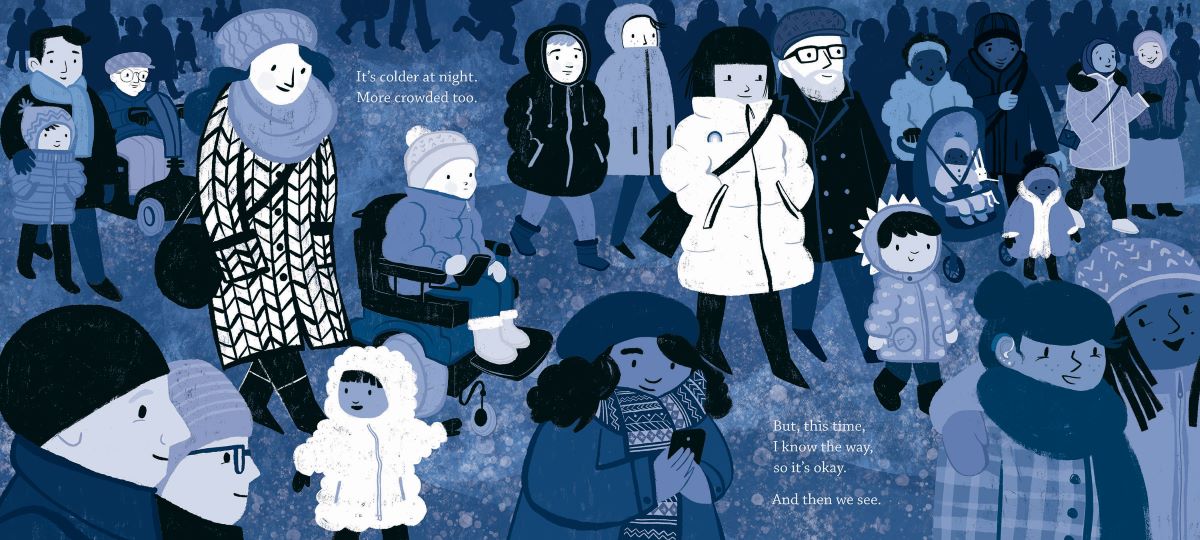
Illustration © Sarah Kurpiel
JB: What is one unexpected joy that came from the creation of A Little Like Magic?
SK: Since the book was loosely inspired by a real festival that took place in the late 1990s and early 2000s, I had an opportunity to do a bit of primary source research. Once I had tracked down the exact dates of the festival, I visited my local public library to browse the microfilmed archives of the local newspaper. I found pages and pages of coverage—news stories, feature stories, opinion pieces, photos, photo collages, and themed advertisements. The festival’s big event was an ice sculpting competition. As I learned from the articles, the sculptures had fabulous names, like “Lunar Illusion,” “Dolphin Diver,” and “Roary” (a carousel lion). One year, first place went to “My Pet Spot,” which the newspaper described as “a man riding a dinosaur.” (To my great disappointment, there was no photo of that one.) It was an unexpected delight to read articles and see photographs of the ice festival I had attended as a kid so many years ago.
JB: What might surprise readers to learn about you or about the writing of A Little Like Magic?
SK: Random doodling is probably the single most important part of my creative process. I love the surprise of drawing with little or no plan. Nearly all my stories have emerged from personal drawings made for fun or relaxation, including A Little Like Magic. As I mentioned earlier, doodling ice sculptures back in 2019 is what first got me thinking about making a book set at an ice festival. It wasn’t until 2021 that I finally figured out what the story was about, but those early doodles were the initial spark.
JB: What do you hope young listeners and readers will take away from A Little Like Magic?
SK: On the surface level, I hope kids take away how cool ice sculpting is as an art form. (If you’re interested in seeing ice sculpting in action, I have a list of recommended videos on my website.
On a deeper level, I hope readers and listeners—especially those who, like me, tend to be nervous in crowded spaces—find encouragement to venture out to new places and open themselves up to the possibility of experiencing something new and wonderful.
JB: Who do you perceive your target audience to be and why?
SK: That’s a good question. I’m still trying to figure that out. I think, subconsciously, I’m writing for kids who are a little (or a lot) shy. Kids who worry or feel nervous. I personally understand the weight of those feelings, so some of my characters tend to navigate those feelings too.
JB: What need(s) does this story satisfy?
SK: A Little Like Magic addresses impermanence in a gentle way. When we know something will only last a short time, we might wonder if it’s worth the effort or we might focus on the fact that it will soon be over or gone. But, as I hope the story conveys, how long something lasts doesn’t determine how meaningful it can be. And memories are a powerful thing.
JB: If you could ask your readers a question, what would it be?
SK: What is one small, special experience in your life that you hope to always remember? You don’t need to tell me or anybody else. But, to help cement it in memory, consider writing or drawing about it just for yourself.
JB: How do you see A Little Like Magic connecting to curriculum or being used in learning settings?
SK: I think A Little Like Magic would connect well with a class art project. Students could learn about ephemeral art—art that is intended to be temporary, like sandcastles and ice sculptures—and then create their own ephemeral art using natural objects, like leaves, rocks, pebbles, pinecones, shells, or sticks. It could be indoors or outdoors. That’s something I would have loved to do when I was a kid.
JB: What do you remember about the first book that made an impact on you?
SK: My earliest book memory doesn’t involve reading or being read to. Before I could read, I remember pouring over the black-and-white illustrated pages of The House at Pooh Corner, The Wind in the Willows, and Charlotte’s Web. I loved those drawings, and I loved the way the old books felt in my hands.
JB: What project(s) are you currently working on?
SK: I’m currently working on final art for my next picture book, which is about a young girl struggling to say goodbye to a beloved old oak tree. The story is loosely inspired by a childhood memory of a tree in my backyard that had to be removed by crane.
JB: What is one question you wish I had asked, and what is your answer?
SK: Did you tuck any personal or other special details into the illustrations?
Answer: Yes, I did indeed! Hidden amid the crowd are a few of my family members and a kid inspired by Peter from Ezra Jack Keats’ classic The Snowy Day. And on the backseat of the van, you can spot my debut picture book, Lone Wolf. Also, photos and articles from the local newspaper archives helped inspire a few details in the illustrations, such as the kid pretending to lick an ice cream cone ice sculpture. When I first saw a photo of that scene in the newspaper, it made me laugh. I knew I had to include it somewhere in the book!
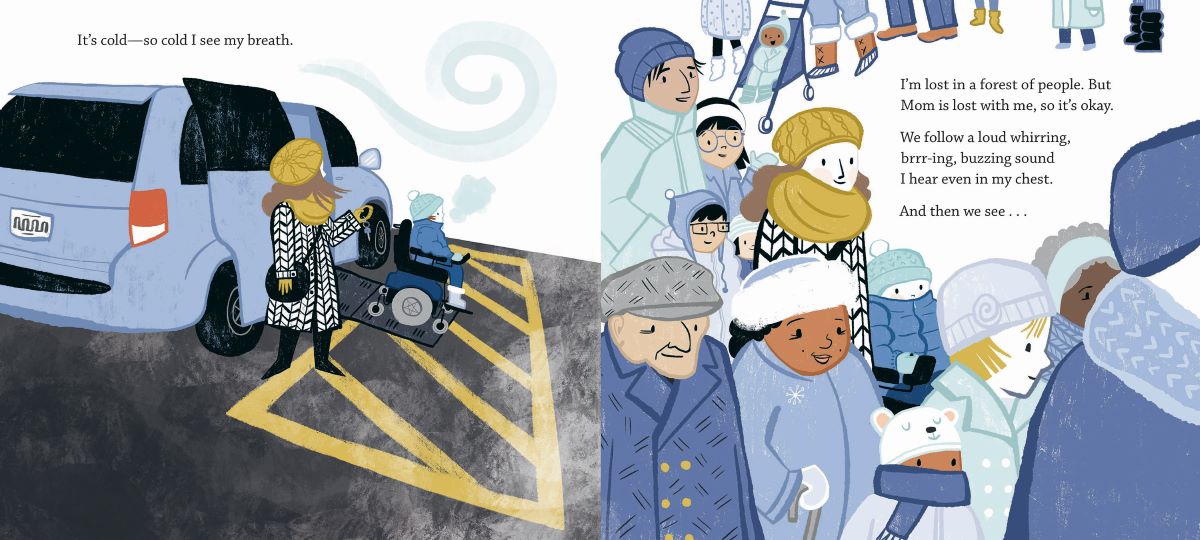
Illustration © Sarah Kurpiel
Also written and illustrated by Sarah Kurpiel
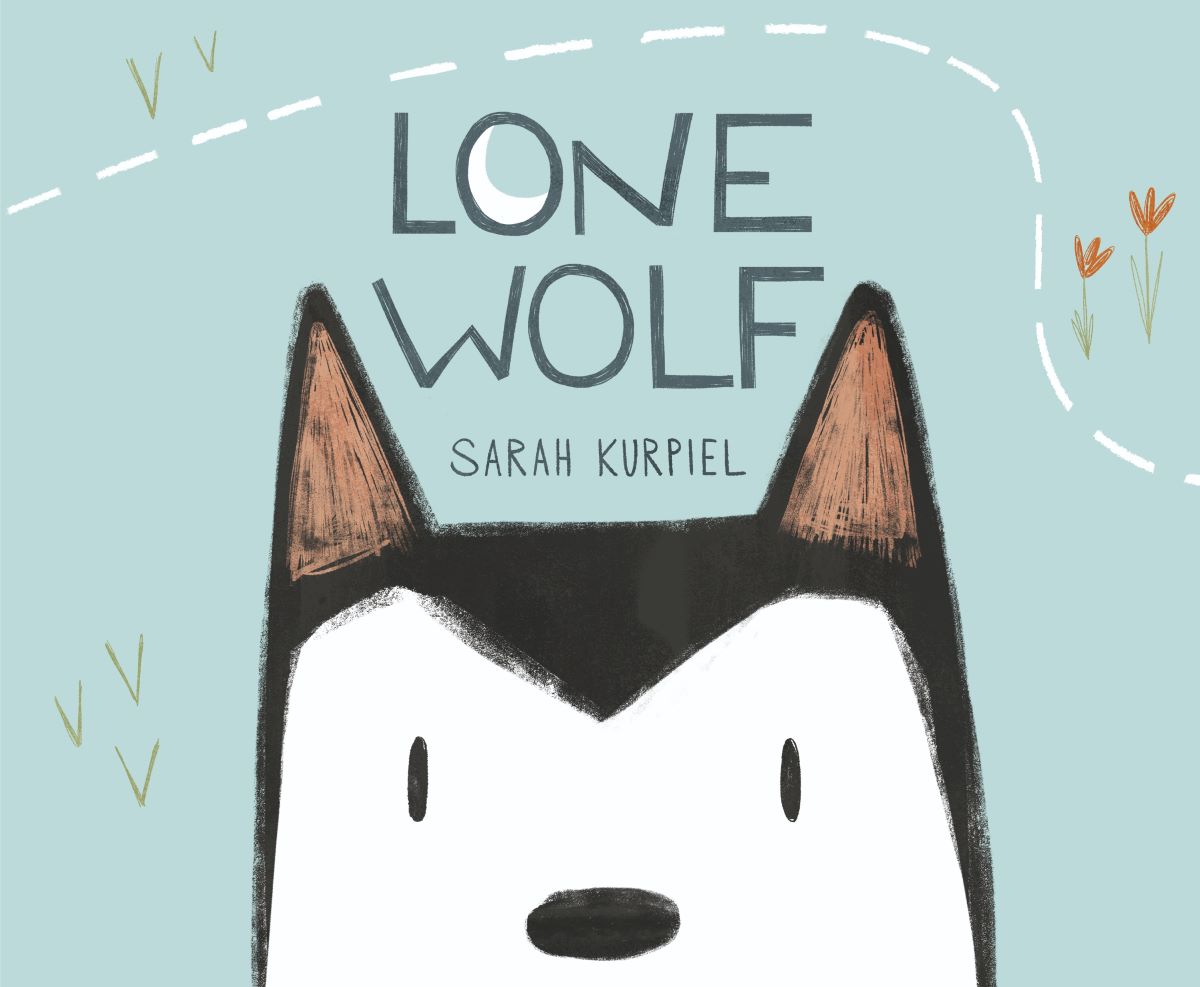
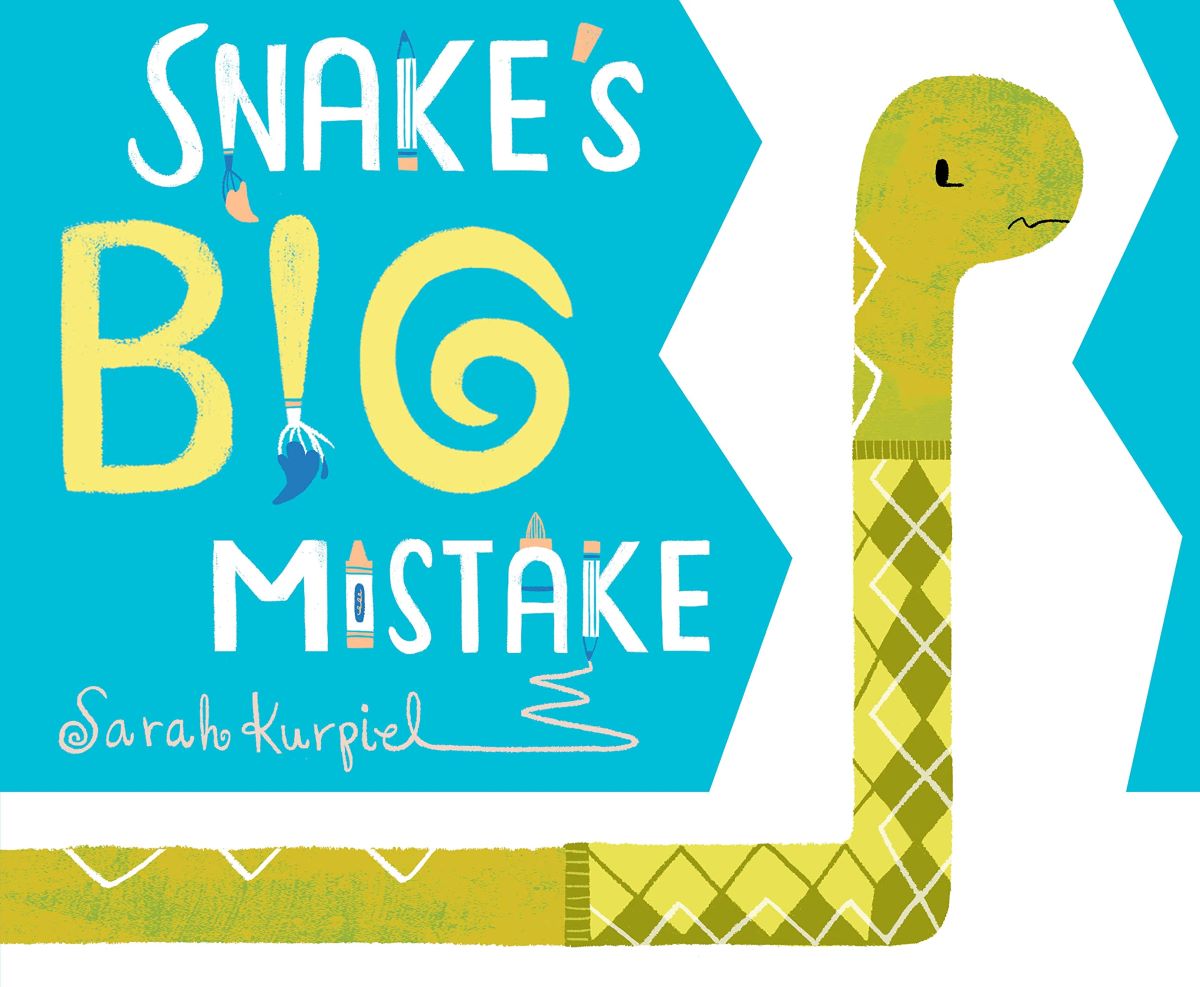
Sidebar Spotlight New releases of note
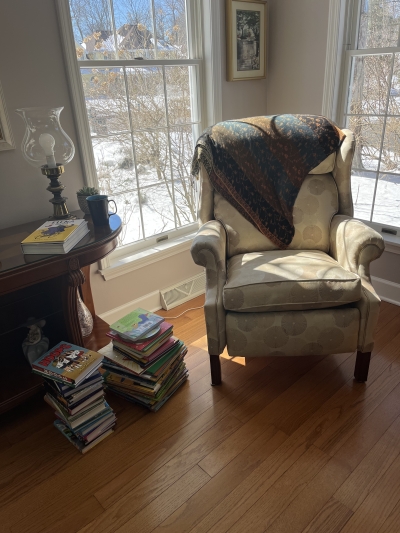
Each month I receive several boxes of books to review from various publishers. As I read and peruse the books, I place them in two piles: those that I will consider featuring on the blog, and those that don’t fit the mission or theme of Children’s Book Corner blog for whatever reason. I highlight some of the books in the “possible” pile on Mondays (most weeks) on Instagram. Ultimately, I choose the one new release I will feature on my monthly blog post. Yet there are many terrific books I wish I could give a shout-out to, even if I can’t write an entire post about each one. So, Sidebar Spotlight is a means of giving a nod to new releases that, in my opinion, are noteworthy. I’ve linked each title to Bookshop so you can learn more. Happy reading, friends! And feel free to comment on these or other new books below.
The Festival of Lights: 16 Hanukkah Stories edited by anthologist Henry Herz features stories and poems from reflective to humorous about the traditions of Hanukkah. Contributing authors include Joanne Levy, Lesléa Newman, Kimberly Brubaker Bradley, and Alan Katz; a recommended selection for middle grades and up.
Bookie & Cookie by Blanca Gómez creatively incorporates the physical structure of a book into a story about friendship and compromise. Spare text, kid-centered dialogue, primary colors, and judicious use of white space add to this entertaining and engaging read aloud recommended for Pre-K-Grade 1.
Black Girl You Are Atlas by Renée Watson, illustrated by Ekua Holmes is a stunning collection of poems aimed at Black girls, middle grade and up; semi-autobiographical poems were written in a variety of poetic forms by the Newbery Honor recipient and illustrated by the Caldecott honoree with mixed media collage art.
News, Updates, & Items of Interest
If you would like the monthly Children’s Book Corner blog post delivered to your inbox, sign up here. We never sell or share subscriber information.
Random Act of Kindness has kicked off the New Year with a number of initiatives, such as free kindness posters, Kindness School Challenges, and a tool kit for preparing and distributing cold care kits for those in need.
You can find where my books and I will be on my Events page.
I am currently booking school visits and professional development sessions for 2025.
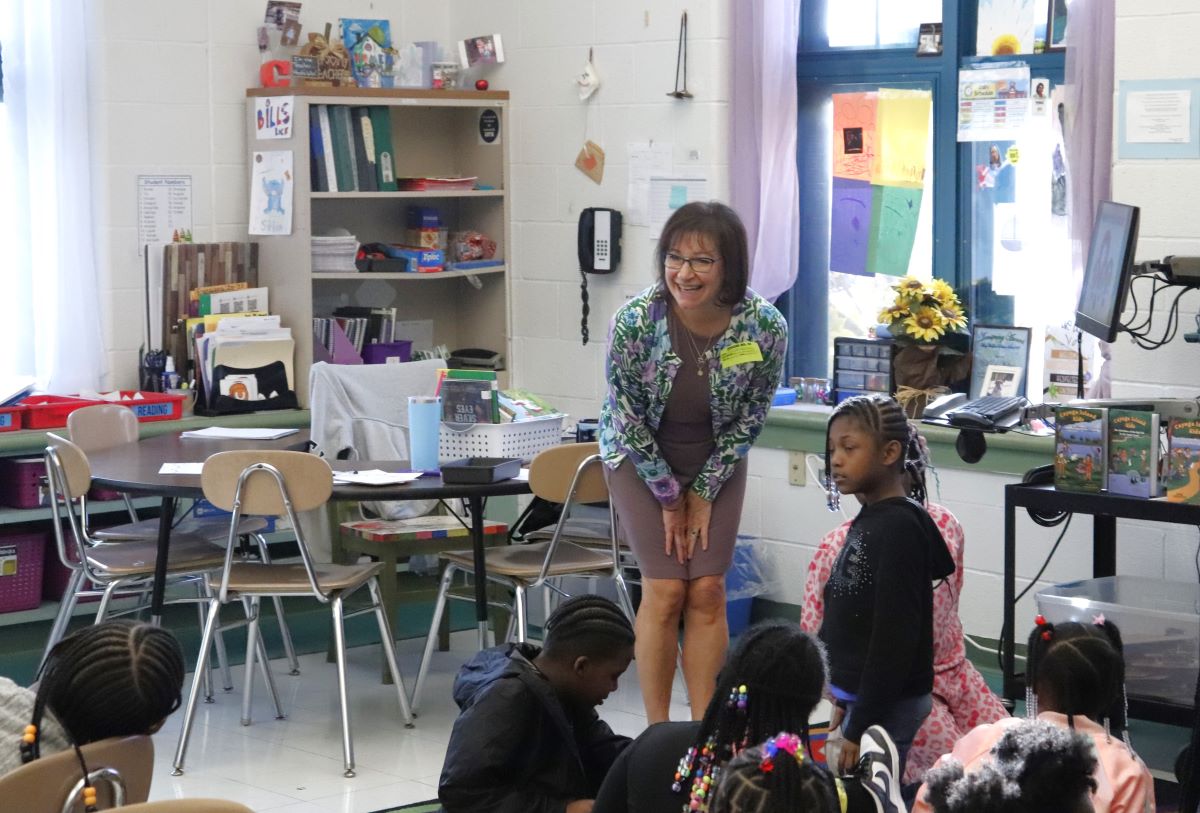
Photo credit: Jody LaRose
Find information and contact me to discuss a visit tailored to meet your school’s needs.
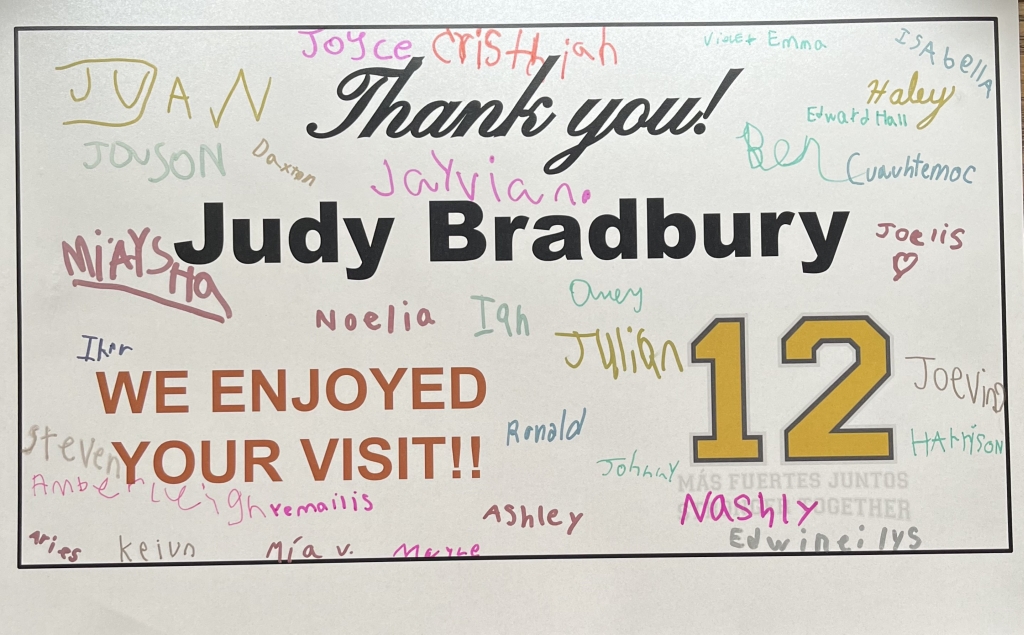
A note from a teacher whose students I recently visited:
Thank you so much for coming to meet with my students. You were wonderful, answering their questions and explaining how you wrote the book. We all loved it! Here are some illustrated thank you notes the students made for you. Thank you again!
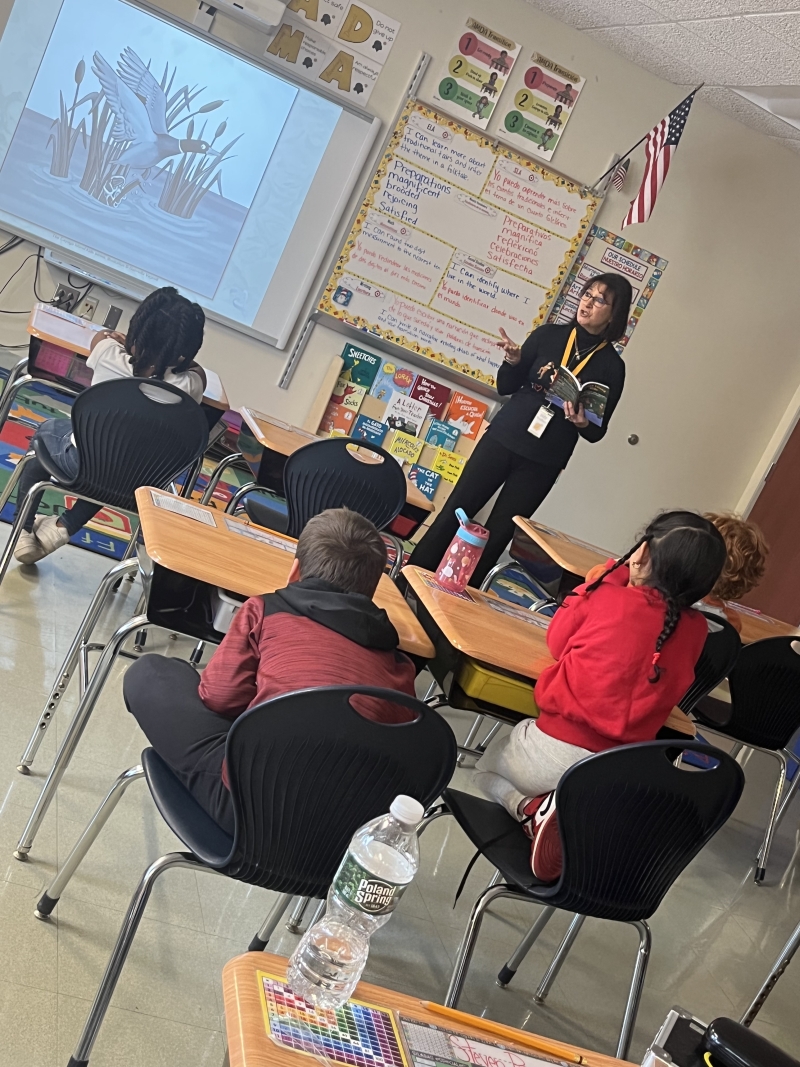
Read-aloud of a portion of Cayuga Island Kids Book 2, The Adventure of the Big Fish by the Small Creek
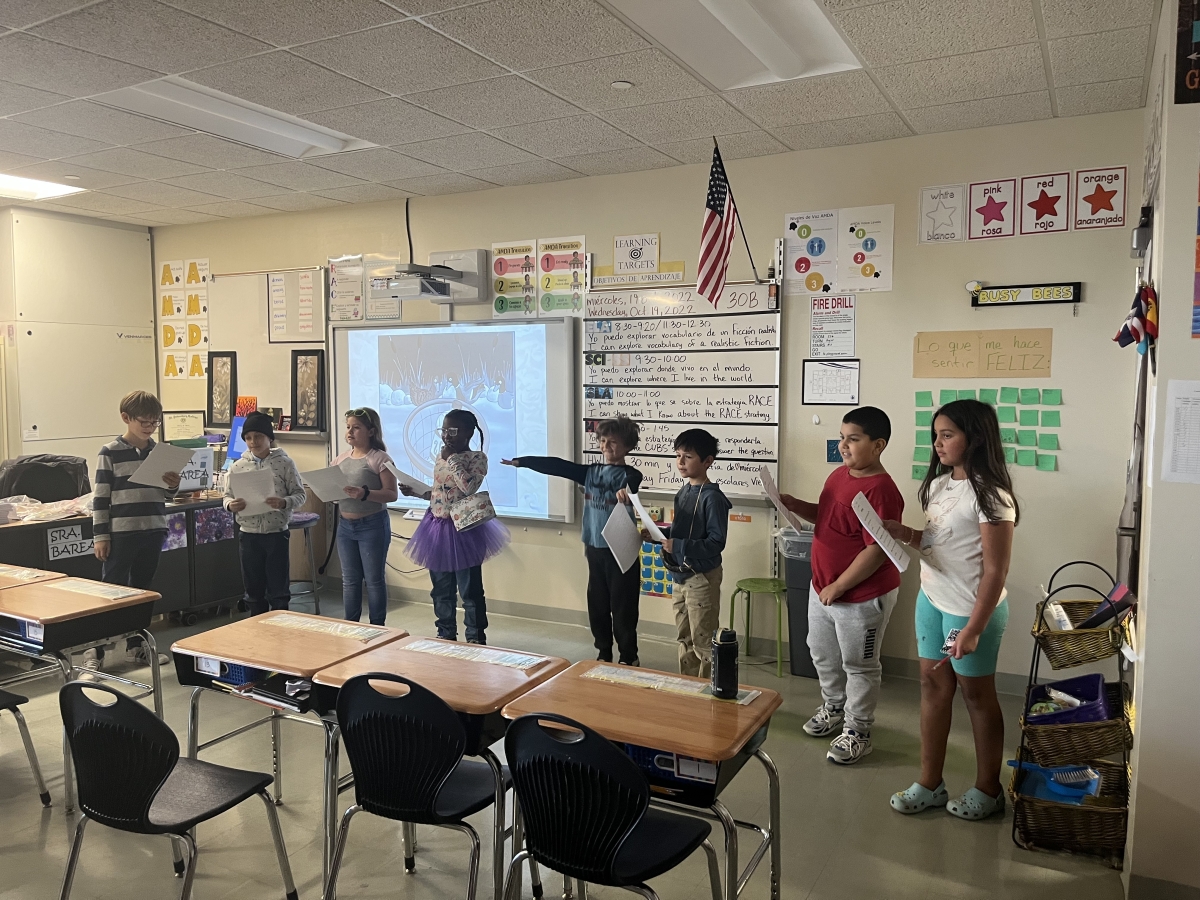
Readers Theater, complete with props!
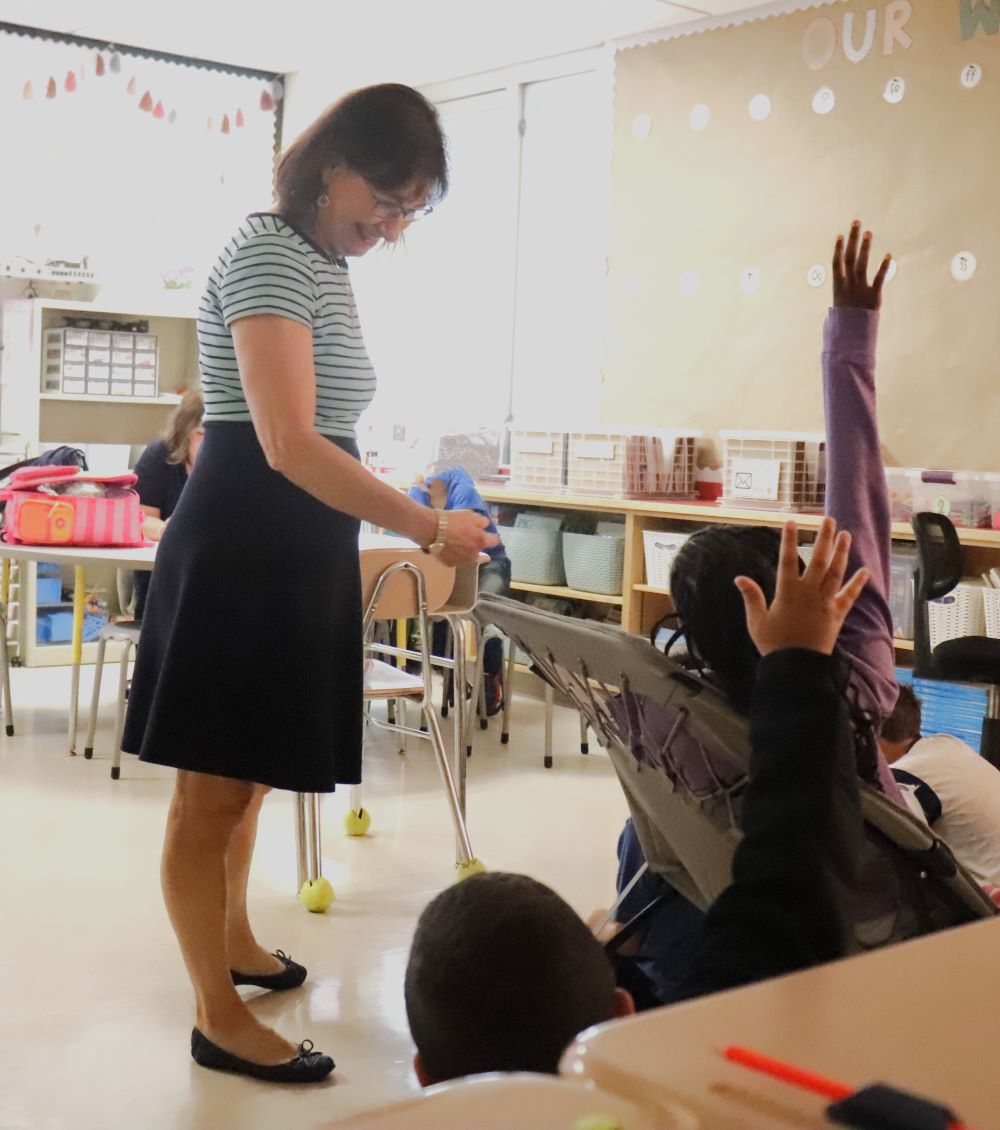
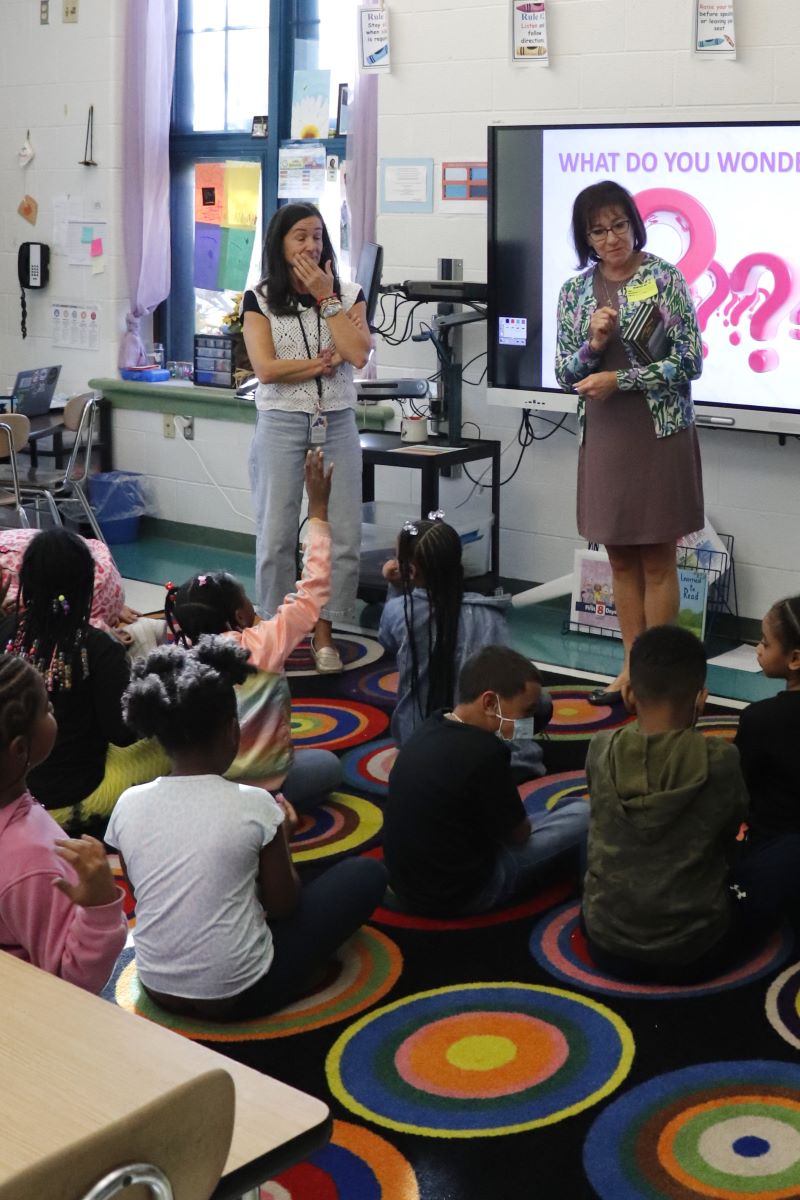
And here’s a note I received after presenting “SEL-Related Children’s Books with Curriculum Tie-Ins” to teachers and librarians of Grades Pre-K—Grade 6:
Thanks so much for presenting! I heard wonderful things about your workshop! One person mentioned to me that you were so organized and passionate. They also loved seeing all the children’s books you brought with you!
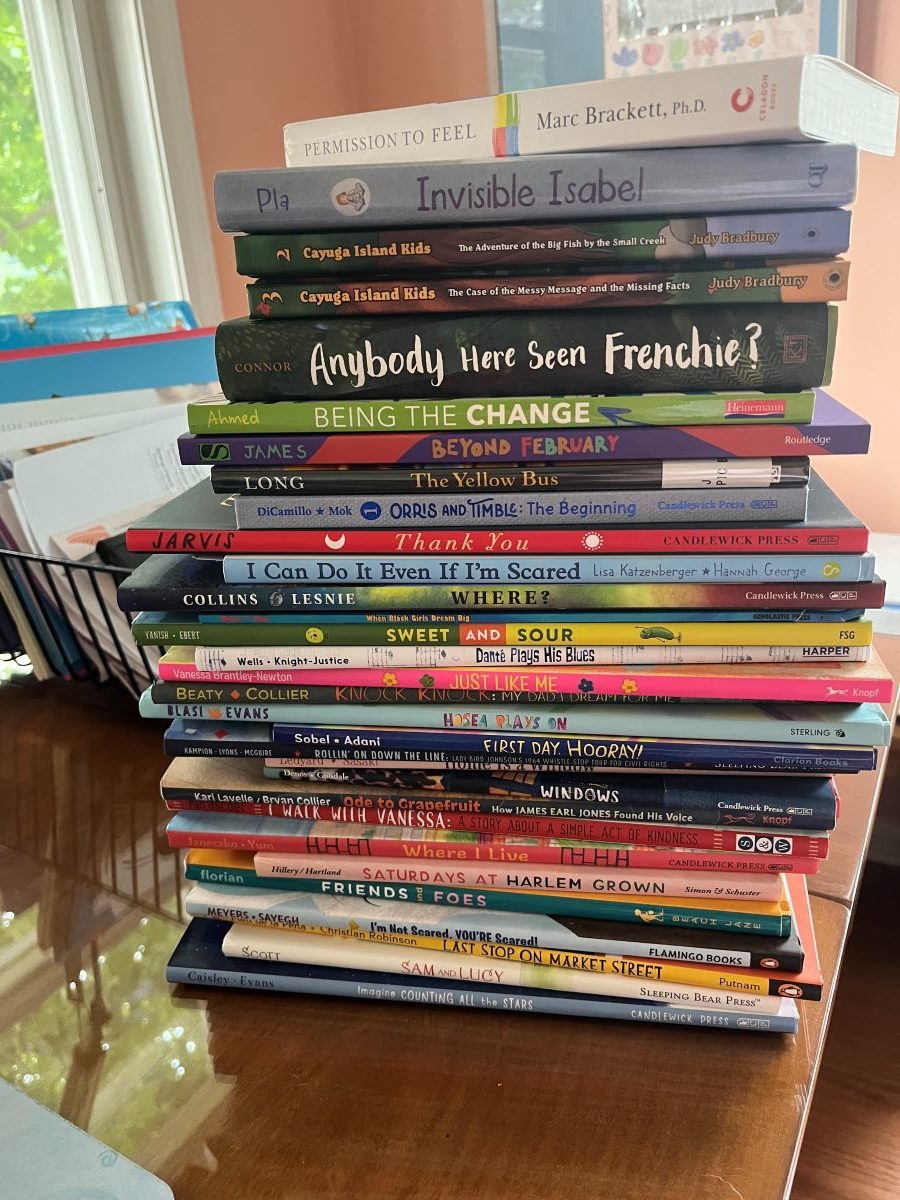
Find my books packaged as a series at your favorite bookshop or purchase directly from the publisher and receive a gift with purchase (perfect for the holiday season!). Individual titles are also available in hard, softcover, and e-book versions.
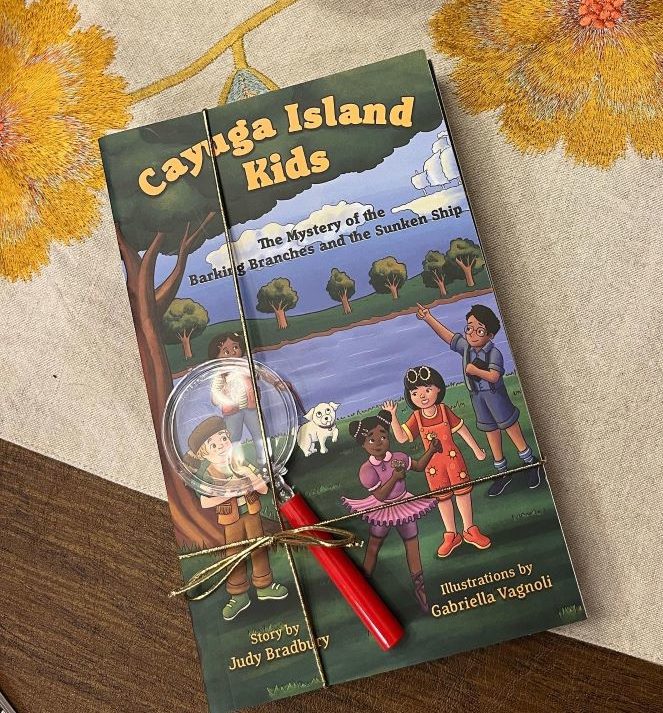
Kindness tip: If you read and like a book, consider posting a review on GoodReads, social media, or on Amazon (if you bought it there). Authors and illustrators appreciate the shout-out. Even a one-sentence comment increases visibility of a book. Also consider placing a request with your local library to purchase a copy–another free way to support a book you recommend!
Over to You…
Join the conversation! Offer your thoughts related to this month’s post:
What book supporting children who are quiet, shy, or somewhat fearful do you recommend?? Share the title, author, illustrator, and suggested age or grade range.
You are also welcome to post a general comment.
Thanks for sharing!
Final Thought
“Those who don’t believe in magic will never find it.”
~ Roald Dahl
Like what you’ve read today? Have Children’s Book Corner delivered to your inbox each month. Sign up here. We never sell or share subscriber information.

